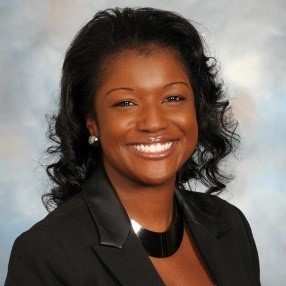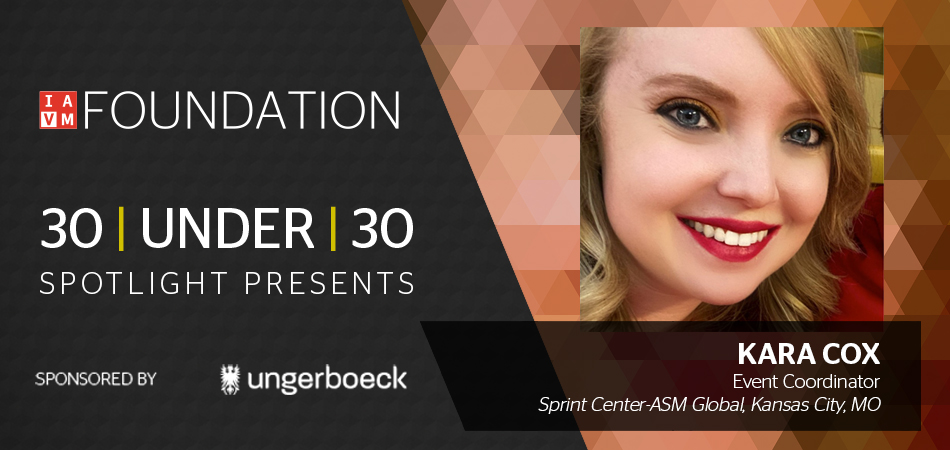Inside the Stanley Cup Bubble: And We’re Done!
By Tom Cornwall, CVE
For me, Bubble life started on July 12 and completed 79 days later on September 29, one day after Game 81 in the bubble saw the Tampa Bay Lightning beat the Dallas Stars in Game 6 to claim the Stanley Cup in Edmonton. Some say the Stanley Cup is the hardest trophy to win in professional sports. Many insiders are saying that this year’s “COVID Cup” was the hardest Stanley Cup to win.
The two hub cities of Edmonton and Toronto consisted of 24 teams and a few hundred NHL staff and contractors all working together to keep the bubble’s safe, both from a security and hygiene standpoint. Most of us lived inside the two bubbles and had very little to no contact with the outside world.
together to keep the bubble’s safe, both from a security and hygiene standpoint. Most of us lived inside the two bubbles and had very little to no contact with the outside world.
It took a village, or in this case, two villages, to pull off this tournament and keep it COVID-free over five playoff rounds consisting of 81 games. According to the NHL, there were almost 34,500 COVID-19 tests conducted with zero positive tests. Needless to say we got very used to our daily throat or nasal swabs!
The opportunity to participate in this historic event will forever rank near the top of my career highlights, especially since this one came in my “retirement” years! The COVID crisis put an end to any hopes of retirement travel adventures so I was very grateful to Oak View Group/Prevent Advisors when they tapped me to join their Edmonton Compliance Team for this project.
The memories are many and the opportunity to meet new colleagues who have become new friends is priceless. On July 12 when I started this project and began planning the fence perimeters that would quickly create our bubble, I wasn’t super optimistic that we could pull this off. Now, 79 days later, it was almost surreal reflecting back on what was accomplished between Toronto and Edmonton bubble dwellers.
The Tampa Bay Lightning fought hard for the right to drink from THE CUP. The dedicated bubble support staff fought tirelessly as a village to help the NHL put the 2019-20 season/Stanley Cup final in the history books. On July 12, I set my project goal to successfully and safely complete this event, pop the bubble, and return to retirement life with Betsy. I am happy to say I have achieved that goal and am once again enjoying home-cooked meals and looking forward to my grandchildren visiting tomorrow!
Tom Cornwall, CVE, is NHL Hub City Compliance Officer, retired.
Spectra Announces Promotions of Tropp, Hinds
Spectra announced two recent promotions, effective immediately.
Jessica Tropp has been promoted to Senior Vice President, Business Development, Sales Support and Production. Throughout  Jess’s 12-year tenure with Spectra, her responsibilities have grown exponentially, becoming an integral member of the Business Development team with oversight of all proposals, RFP responses, and corporate marketing materials for Venue Management, Food Services & Hospitality, and Partnerships.
Jess’s 12-year tenure with Spectra, her responsibilities have grown exponentially, becoming an integral member of the Business Development team with oversight of all proposals, RFP responses, and corporate marketing materials for Venue Management, Food Services & Hospitality, and Partnerships.
 Nalana Hinds has been promoted to Senior Vice President, Corporate Controller. Since joining Spectra as VP, Corporate Controller in 2018, Nalana has relentlessly embraced new responsibilities, from strategically building out the Food Services & Hospitality accounting group, to overseeing the company’s treasury and tax functions. She also passionately mentors the corporate accounting team across the Venue Management, Food Services, and Partnerships divisions.
Nalana Hinds has been promoted to Senior Vice President, Corporate Controller. Since joining Spectra as VP, Corporate Controller in 2018, Nalana has relentlessly embraced new responsibilities, from strategically building out the Food Services & Hospitality accounting group, to overseeing the company’s treasury and tax functions. She also passionately mentors the corporate accounting team across the Venue Management, Food Services, and Partnerships divisions.
Edmonton Convention Centre and Edmonton EXPO Centre Recognized as 2021 Centers of Excellence
By Mevisha Maistry
The Edmonton Convention Centre and Edmonton EXPO Centre announced that both venues are recognized among the 2021 EXHIBITOR Centers of Excellence. Produced by EXHIBITOR Magazine, the annual award recognizes the top 30 venues for trade shows and events in North America.
All North American convention and exhibition venues are eligible to apply to the Centers of Excellence program, with the  30 highest-scoring entries being named among Centers of Excellence. Applicants are evaluated by a panel of corporate exhibit managers based on a survey of past clients (Customer Service and On-Site Support) and criteria within five categories including: Facility and Functionality, Location and Accommodations, Service and Execution, Upgrades and Expansions and Awards and Industry.
30 highest-scoring entries being named among Centers of Excellence. Applicants are evaluated by a panel of corporate exhibit managers based on a survey of past clients (Customer Service and On-Site Support) and criteria within five categories including: Facility and Functionality, Location and Accommodations, Service and Execution, Upgrades and Expansions and Awards and Industry.
“Both the Edmonton Convention Centre and Edmonton EXPO Centre were among just 25 facilities that scored more than 300 points in the category of Customer Service and On-Site Support—a score that is based on surveys of past customers as well as EXHIBITOR readers who have exhibited at, or hosted events at, the venues in question,” said Travis Stanton, editor of EXHIBITOR. “That’s a strong indication event organizers and participants can rest easy knowing they’ll be in caring and capable hands anytime business travel takes them to Edmonton.”
 Operated by Explore Edmonton Corporation (Explore Edmonton), the Edmonton Convention Centre and Edmonton EXPO Centre are fixtures in the community that contribute to the vitality of Edmonton as a visitor destination.
Operated by Explore Edmonton Corporation (Explore Edmonton), the Edmonton Convention Centre and Edmonton EXPO Centre are fixtures in the community that contribute to the vitality of Edmonton as a visitor destination.
“It is an honour to have both Explore Edmonton managed venues recognized as Centers of Excellence—a testament to our expertise in venue management and Edmonton’s ability to deliver exceptional visitor experiences through two of North America’s top facilities,” said Arlindo Gomes, Vice President of Venues for Explore Edmonton. “Event planners and clients get more than a venue–they gain access to the planning expertise and resources of a committed team of professionals that care about the experience of everyone that walks through our doors.”
The Edmonton EXPO Centre stands as the largest exhibition space in Western Canada with over 522,000 square feet and 1.3 million annual visitors. Located minutes from downtown Edmonton via Light Rail Transit access, the Edmonton EXPO Centre houses eight adaptable exhibit halls, Edmonton’s only mid-sized arena and a modern conference centre. The Edmonton EXPO Centre attracts the region’s largest trade shows, festivals, live entertainment and sporting events and delivered $74.4 million in economic impact in 2019.
Architecturally entrenched in downtown’s riverbank with Canada’s largest building-integrated solar cell installation, the Edmonton Convention Centre overlooks North America’s biggest urban parkland. The centre is one of only five Canadian venues with ASTM certification and was also the first convention venue in Canada to receive Green Key level five certification. Through its commitment to its people and local culture, the centre gives back to its community through social sustainability programs and attracts international and national events which drove $39.4 million in economic impact in 2019.
Mevisha Maistry is Specialist, Marketing and Communications – Venues, for Explore Edmonton.
30|UNDER|30 Spotlight: Kara Cox

Kara Cox
Event Coordinator, Sprint Center
Kara Cox is an event coordinator for Sprint Center in Kansas City, Missouri. Her career in venue management began in 2016 as an event supervisor for the Show Me Center in Cape Girardeau, MO. With her passion for the industry and desire to strive for excellence, she is determined to do everything she can to see the venue industry succeed.
Join your Foundation in congratulating Kara on being honored as one of the 30|UNDER|30 Class of 2020 and don’t forget to come back each Thursday as we spotlight another honoree!
New Coalition of Public and Private Sector Leaders Call on Congress to Act on COVID Relief Before Election
The COVID Relief NOW Coalition calls for “No Recess Without Relief” imploring Congress to find bipartisan solution to move COVID stimulus package
IAVM has joined COVID RELIEF NOW, a new coalition of nearly 200 major public and private sector groups across the U.S. Today, COVID RELIEF NOW called for “No Recess without Relief” imploring Congress to not leave town for the 2020 elections without passing additional COVID economic relief – stating millions of jobs and survival of small businesses as well as vital government services are on the line.
Brad Mayne, President and CEO of IAVM states, “Our public venues in every community have been decimated by the inability to open our arenas, stadiums, performing arts theaters, and convention centers which derive their revenues from hosting events. This not only affects the organization and it’s employees, but also the small businesses that support the events including production, F&B, restaurants, hotels, and the like.”
The coalition stated that if Congress fails to act, millions of employees will be furloughed or terminated; millions of unemployed Americans will lose their unemployment insurance pandemic benefits; hundreds of thousands of companies will be at risk of closing their doors forever; and the vast majority of state and local governments will have to curtail critical services in order to balance budgets due to a decline in tax revenue.
Click here to view the letter signed by coalition members that was sent to Congress today.
Do you want to receive a Front Row News weekly digest?
Categories
- Allied (861)
- Architecture (147)
- Arenas (747)
- Career (897)
- Convention Centers (895)
- Education (623)
- Events (1,544)
- Food & Beverage (193)
- Foundation (113)
- Guest Experience (1,496)
- Industry News (2,270)
- Leadership (1,888)
- Marketing (150)
- Membership (2,000)
- Music (213)
- Performing Arts Centers (454)
- Professional Development (409)
- Research (127)
- Safety & Security (442)
- Sports (763)
- Stadiums (608)
- Student (159)
- Technology (516)
- Ticketing (92)
- Touring (82)
- Trends (364)
- Uncategorized (725)
- Universities (218)
- Video (25)
- Young Professional (198)
Twitter Feed
- Twitter feed loading
Recent Posts
- McNamara Named General Manager of Will Rogers Memorial Center
- Matt Rife Breaks Record for Most Tickets Sold for a Comedy Show at Honda Center
- The Events Industry Council Recognizes the Miami Beach Convention Center (MBCC) for Achieving Gold Level Sustainability Certification
- Raleigh Convention Center Shares Designs of Upcoming Expansion
- Acrisure Arena Wraps ‘Magnificent 7’ with Record-Setting Week of Live Entertainment, Welcoming Fans from All 50 States
Categories
- Allied
- Architecture
- Arenas
- Career
- Convention Centers
- Education
- Events
- Food & Beverage
- Foundation
- Guest Experience
- Industry News
- Leadership
- Marketing
- Membership
- Music
- Performing Arts Centers
- Professional Development
- Research
- Safety & Security
- Sports
- Stadiums
- Student
- Technology
- Ticketing
- Touring
- Trends
- Uncategorized
- Universities
- Video
- Young Professional
Archives
- November 2025
- October 2025
- September 2025
- August 2025
- July 2025
- June 2025
- May 2025
- April 2025
- March 2025
- February 2025
- January 2025
- December 2024
- November 2024
- October 2024
- September 2024
- August 2024
- July 2024
- June 2024
- May 2024
- April 2024
- March 2024
- February 2024
- January 2024
- December 2023
- November 2023
- October 2023
- September 2023
- August 2023
- July 2023
- June 2023
- May 2023
- April 2023
- March 2023
- February 2023
- January 2023
- December 2022
- November 2022
- October 2022
- September 2022
- August 2022
- July 2022
- June 2022
- May 2022
- April 2022
- March 2022
- February 2022
- January 2022
- December 2021
- November 2021
- October 2021
- September 2021
- August 2021
- July 2021
- June 2021
- May 2021
- April 2021
- March 2021
- February 2021
- January 2021
- December 2020
- November 2020
- October 2020
- September 2020
- August 2020
- July 2020
- June 2020
- May 2020
- April 2020
- March 2020
- February 2020
- January 2020
- December 2019
- November 2019
- October 2019
- September 2019
- August 2019
- July 2019
- June 2019
- May 2019
- April 2019
- March 2019
- February 2019
- January 2019
- December 2018
- November 2018
- October 2018
- September 2018
- August 2018
- July 2018
- June 2018
- May 2018
- April 2018
- March 2018
- February 2018
- January 2018
- December 2017
- November 2017
- October 2017
- September 2017
- August 2017
- July 2017
- June 2017
- May 2017
- April 2017
- March 2017
- February 2017
- January 2017
- December 2016
- November 2016
- October 2016
- September 2016
- August 2016
- July 2016
- June 2016
- May 2016
- April 2016
- March 2016
- February 2016
- January 2016
- December 2015
- November 2015
- October 2015
- September 2015
- August 2015
- July 2015
- June 2015
- May 2015
- April 2015
- March 2015
- February 2015
- January 2015
- December 2014
- November 2014
- October 2014
- September 2014
- August 2014
- July 2014
- June 2014
- May 2014
- April 2014
- March 2014
- February 2014
- January 2014
- December 2013
- November 2013
- October 2013
- September 2013
- August 2013
- July 2013
- June 2013
- May 2013
- April 2013
- March 2013
- February 2013
- January 2013
- May 2012
- March 2012
- December 2011
- November 2011
- October 2011
Recent Comments
- Frank Bradshaw, Ph.D., CVE on John Meyer, CVE, a Tireless Advocate of Certification for Venue Professionals, Has Died
- Neil Sulkes on Hilary Hartung, Friend to Many in Venue Marketing, Has Left Us
- Jason Parker, CVE on The Devastation of Hurricane Helene and How We Can Support One Another
- Larry Perkins on Touhey Testifies Against Speculative Ticketing Before Congressional Subcommittee
- Peter Secord on Major Players for Planned Elkhart Amphitheater Were in the Mix at VenueConnect
